Please use the following link to download the March 13, 2021 issue of the syəcəb
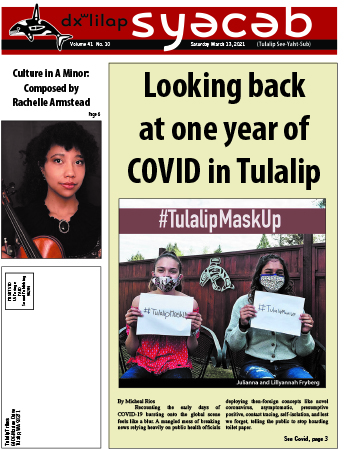
syəcəb
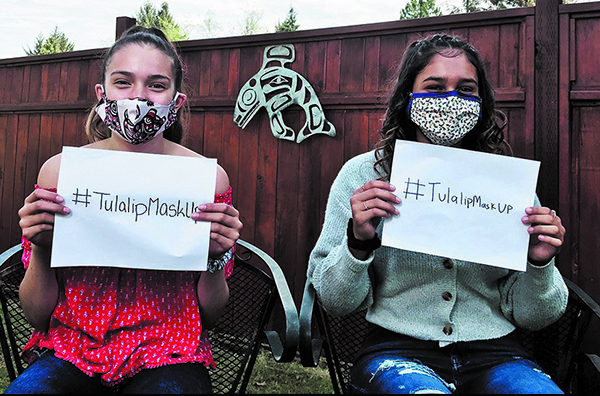
By Micheal Rios, Tulalip News
Recounting the early days of COVID-19 bursting onto the global scene feels like a blur. A mangled mess of breaking news relying heavily on public health officials deploying then-foreign concepts like novel coronavirus, asymptomatic, presumptive positive, contact tracing, self-isolation, and lest we forget, telling the public to stop hoarding toilet paper.
For many people in Tulalip, and all over the world for that matter, life will never return to the way things were pre-COVID. From devastating losses to new norms, like mask mandates and social distancing, to the Tribe’s reopening process and vaccine distribution, we take a look back at twelve months of adapting to the new normal.
March 2, 2020
The Snohomish County Health District states the risk of contracting Coronavirus is very low. The Board of Directors and the core team meet for a strategic planning session about the Coronavirus. They begin to implement a plan to ensure the safety of our community.
March 3, 2020
Tulalip leadership received notification of two community residents transported to local hospitals with similar symptoms to COVID-19. Out of an abundance of caution, public notice is sent out. The notice states coronavirus is generally considered a mild illness in most healthy individuals. It also states the elderly, those with underlying health conditions and those will compromised immune systems may be severely affected by the virus.
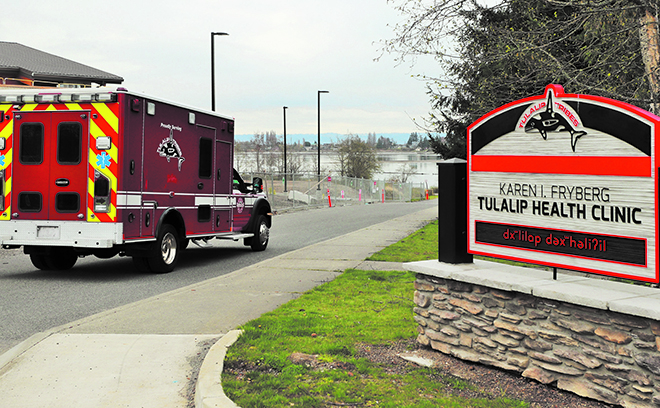
March 13, 2020
The U.S. President declares a national state of emergency. A triage tent is set up at the entrance of the Tulalip health clinic where patients are asked a series of questions, offered hand sanitizer and, depending on their symptoms, offered a mask. The community is urged to disinfect high touch surfaces, wash hands often, and refrain from touching your eyes, nose and mouth.
March 16, 2020
The decision is made to close Tulalip Resort Casino, Quil Ceda Creek Casino and Bingo gaming operations through March 31. Tulalip’s emergency management team is actively working with Snohomish County and Washington State response teams. Effective immediately both Tribal Government and Quil Ceda Village reduce working personnel to essential staff only.
A community-led food distribution gives away 5,000 pounds of food to tribal members in just one hour.
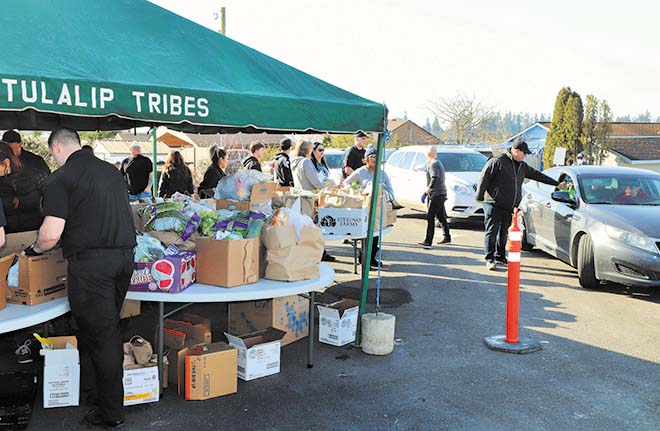
March 23, 2020
Tulalip leadership received notification of two more confirmed positive cases of Covid-19 within the Reservation. One showed symptoms, while the other was asymptotic or showing no symptoms. This highlighted the need to stay home and stop visiting, hugging, or interacting with anyone other than those in your household.
Community Health begins working with Tulalip Bay Fire on contact tracing. All Tulalip facilities, including outdoor areas like neighborhood parks, skate park and ball fields, are closed.
March 25, 2020
Emergency Order: Stay Home and Stay Healthy is proclaimed by Tulalip Board of Directors until further notice. Community is informed of six confirmed cases of COVID-19 on the Reservation, including it being a cause of death for one tribal elder.
Marysville School District staff distributed over 1,000 Chromebooks to their elementary-aged families.
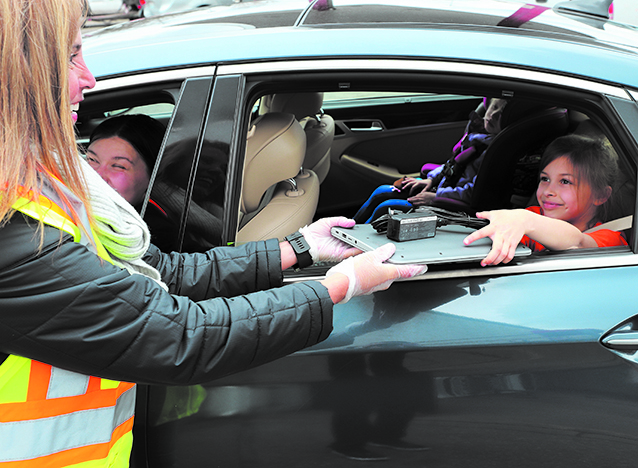
March 28, 2020
Tulalip authorizes code to order and enforce quarantines to protect the safety of the community. A resolution enacted within the code appoints Tulalip’s Dr. John Okemah as the authorized medical officers whereby he can issue detention, isolation, or quarantine of a person involuntarily for up to 14 days. Violation of an order can result in a civil infraction with a fine up to $1,000 or $500 per day in case of continuing infraction.
Tribe is currently operating on a skeleton staff. Most Tulalip entities closed on March 17. Mandatory furloughs set to begin on April 13.
April 3, 2020
Tulalip Health System begins offering telemedicine or video appointments via Zoom with medical providers, mental health therapists, and chemical dependency therapists. Tulalip co-funded an additional ambulance for Tulalip Bay Fire as part of COVID-19 response. This new until is responsible for transporting both Tulalip and non-Tulalip who are presumptive positive with virus for medical care.
Tulalip tribal member Georgina Medina starts her own mask making business. Her unique, Native-inspired masks are a huge hit and she sells them to customers from Alaska to California.
April 24, 2020
Karen I. Fryberg Health Clinic contracts with a local lab to conduct COVID-19 tests, which means test results are delivered in 24 hours or less.
Quil Ceda Elementary staff eagerly assemble for a positivity-filled parade through the Tulalip Reservation. The caravan featured 70+ cars decorated with loving messages to their students like ‘We miss you!’, ‘You are amazing’ or ‘Stay safe!’.
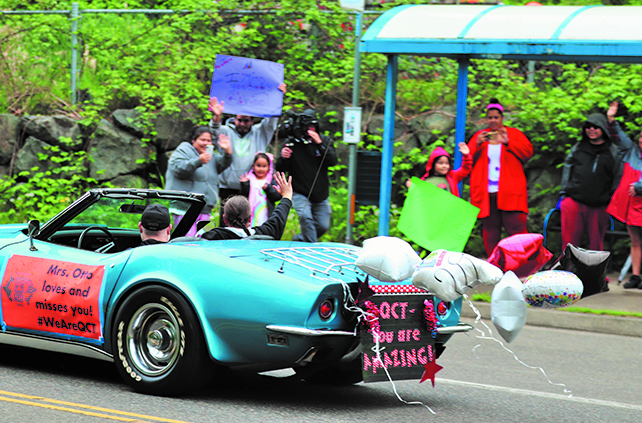
May 15, 2020
The Tribal Government furlough has been extended through June 30. When employees return to their offices, they will have their temperature checked as a precaution. They will also be asked to wear face masks, implement social distancing, and work staggered schedules.
May 26, 2020
In spite of Governor Inslee’s state-wide shutdown orders for all non-essential business, Tulalip exercises its tribal sovereignty and proclaims gaming operations essential. Tulalip Resort Casino and Quil Ceda Creek Casino both reopen at near 50% capacity. Hundreds of sanitizing stations and Plexiglas dividers now in place. Before anyone enters, visitors must have their temperatures taken and be wearing a mask.
June 1, 2020
Tulalip Reservation was the target of vandalism and looting. Approximately 40 people converged on Tulalip in an attempt to vandalize and loot businesses within Quil Ceda Village. Several suspects were arrested for criminal trespass, while others fled the property.
Over 1,000 community members from the Tulalip/Marysville area come together to peacefully march against racism. Near the march’s core was a cohort of Tulalips offering support through rhythmic drum beats and melodic song. Heartfelt messages written in Lushootseed were seen proudly displayed by both tribal and nontribal alike.
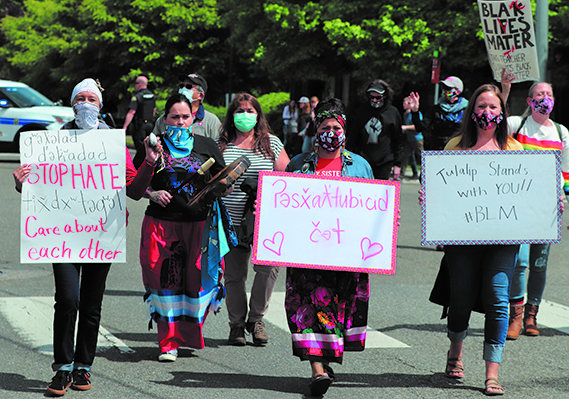
June 26, 2020
Tulalip is now in phase three of our reopening plan. After 42 days with no positives, Tulalip has two new cases test positive and three other suspected cases pending test results. City of Marysville and Snohomish County both seeing an uptick in positive tests.
Health Clinic now has two types of COVID-19 tests on hand, the nasal swab test for those with symptoms (results in 24 hours) and a blood-based antibody test for those without symptoms (results in 15 minutes).
Thousands of customers from all over the Pacific Northwest journey to Boom City seeking the perfect purchase consisting of child friendly sparklers and, of course, the thrilling sights and sounds of more advanced fireworks.
July 30, 2020
Tulalip Health Clinic had its first staff member test positive for COVID-19. Out of an abundance of caution, the Clinic went through an after-hours deep clean using cutting edge technology and processes. The most common symptoms of COVID include fever, cough, shortness of breath, and fever.
October 8, 2020
We continue to have community upticks in COVID. Our total number of positives for the month is 15. The current trends shows teens and young adults make up the majority of positives. Drive-through testing is being done on-site at the Health Clinic.
The Tulalip distance learning sites (Youth Center and B&GC) continue to adapt and find creative ways to provide additional support to our students. Both locations are a safe space for students to access the internet, connect to WI-FI, or use a desktop.
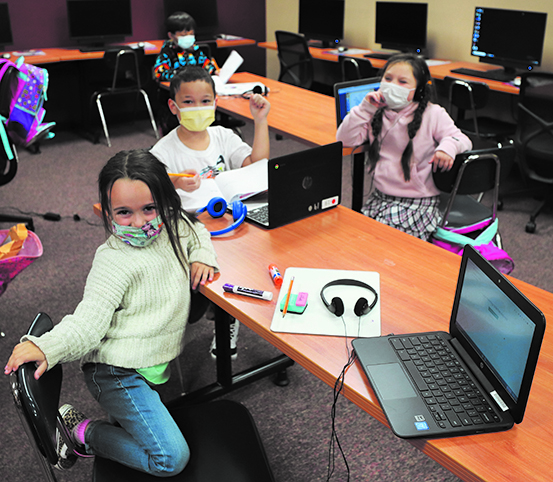
October 16, 2020
Tulalip has the highest number of active cases to date. The majority of our positives are in their teens and 20s. This is particularly dangerous because many younger patients are asymptomatic or have very mild symptoms, yet they are very much contagious.
November 13, 2020
Although Tulalip’s numbers have remained steady, surrounding communities are skyrocketing. Local hospitals are seeing unprecedented numbers of COVID patients. With the holidays approaching, we are worried about the future. Governor Inslee has implied further restriction may be coming if we can’t reverse the trend.
November 17, 2020
Tulalip Board of Directors proclaims updated public health restrictions. The following measures are ordered: all tribal gaming operations will operate at reduced capacity and now be smoke-free, all restaurants and retail stores limited to 25% capacity, and funerals limited to outdoor, graveside services only.
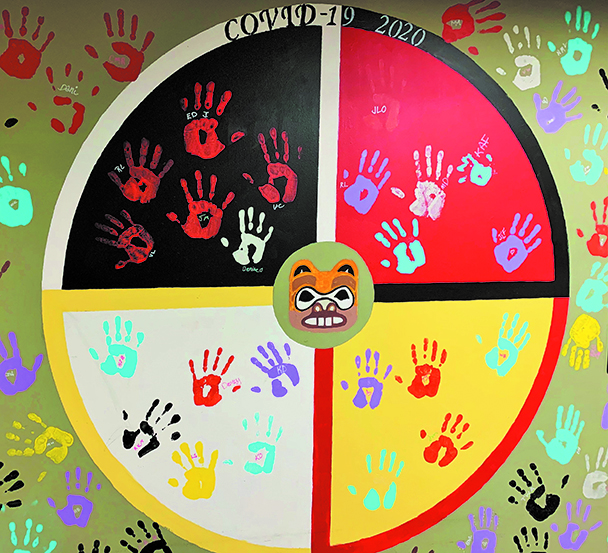
November 23, 2020
Tulalip’s COVID cases are surging. Currently have 40 active cases, with about a third of them related to a cluster outbreak. It is bad news because it highlights the growing COVID fatigue in our community before some of the biggest travel and gathering days nationally.
December 4, 2020
Tulalip has 52 active COVID cases. That means one out of every 100 Tulalip citizens is currently ill with COVID. We know there are more positives than our numbers show. According to the CDC, symptoms can appear anytime between 1 and 14 days after contact. A negative test does not mean you do not have the disease. In particular, rapid tests are known to give false negatives.
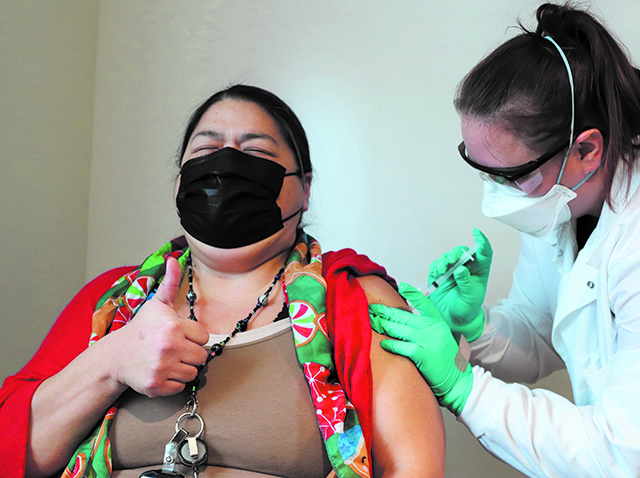
December 23, 2020
Tulalip Health Clinic is full of hope and excitement as the first doses of the much heralded Moderna Vaccine are administered to Tulalip’s most vulnerable. The immediate recipients are Tulalip’s elders, most high-risk citizens, first responders, and frontline healthcare workers.
January 5, 2021
COVID-19 is surging on the Reservation. Following the winter closure and holiday break, Tulalip has 16 confirmed active cases, 51 suspected via contact tracing who are home isolating, and 5 confirmed deaths related to the virus.
New 126,000 square foot Quil Ceda Creek Casino opens to much excitement. The $125 million casino and parking garage is packed to maximum allowed capacity under COVID-19 cautionary guidelines.
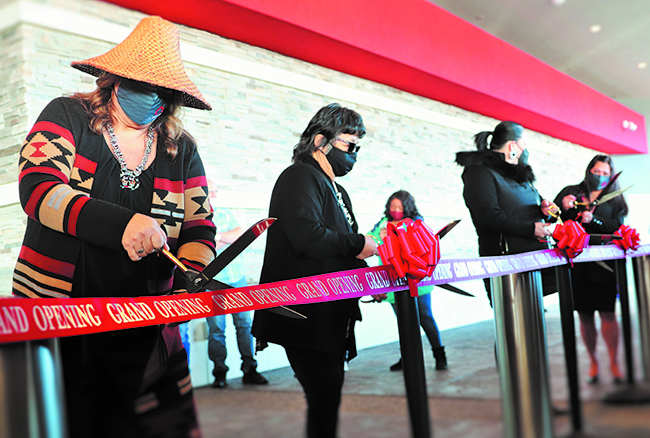
January 29, 2021
Coronavirus surge continues as statistics show Tulalip has 35 active cases, 75 in home isolation, 3 hospitalized and 6 deceased. On the plus side, 3,842 total vaccination have been administered since Moderna Vaccine arrived just weeks ago.
Entire Marysville School District is offered an opportunity to travel into the heart of the reservation to visit the makeshift vaccination distribution center that is the Tulalip Youth Complex. Hundreds of teachers and support staff accept the Tribe’s vaccination offer.
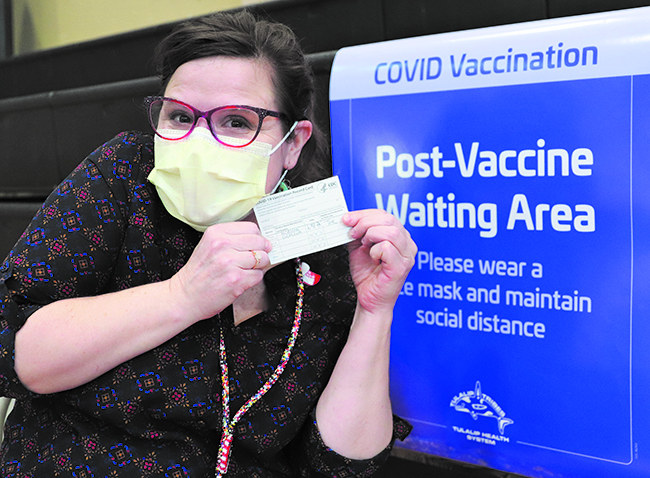
February 23, 2021
For the first time in 8 months, Tulalip has zero active cases. A huge accomplishment following nearly two months of surging confirmed cases, even more presumptive positives self-isolating, and 7 elders lost. A whopping 7,820 vaccinations have been distributed at the Health Clinic and 27% of eligible Tulalip tribal members have been vaccinated.
A community-led cleanup crew removes over 2,000 pounds of litter from Tulalip streets. An estimated forty volunteers sacrifice time from their weekend to beautify two mile stretch of Turk Drive.

March 9, 2021
Tulalip has only 2 active cases. It’s reported that 311 Tulalip citizens have recovered from their battle with COVID, while the loss of life remains at 7 elders. A stunning 10,074 total vaccinations have been administered and 34% of eligible tribal members have been vaccinated.
And here we are, back to present day. One whole year went by in a flash of State-ordered shutdowns, mask mandates, and sanitizing frenzy. Along the way, the Tulalip community rallied around self-determination, embraced tribal sovereignty, and found a new sense of shared strength and resiliency. Business is back to normal, well the new normal anyway.
Tulalip Chairwoman Teri Gobin, while reviewing everything that’s occurred over the past twelve months, reflected “To say this past year has been challenging is an understatement to say the least. It was a very scary time, especially in the beginning of COVID, for everyone. As a leadership team, we tried our best to make the best decisions for our people with information that was constantly changing. Our priority was always the safety of our people and ensuring our culture would survive.
“It was amazing to hear stories of our community members helping each other and offering critical support for those who needed it most,” she continued. “From buying and delivering groceries to those who were homebound, making masks and hand sanitizer for those in need, and meeting the needs of our elders, the strength and commitment showed by our people was tremendous. We didn’t know what the future would bring, and still we got through one of the most difficult times in our history together, as a community.
“Looking forward, I’m very optimistic,” Teri added. “We’ll continue to get through this time and when it’s over our future will be even brighter. The last year has given us fresh perspectives on the needs of our membership and presented us with big opportunities for new economic development. More than anything, we’ve realized how much gathering means to our culture and once we’re able to have our gatherings again, safely, I think Tulalip will be reenergized and establish an every stronger connection to our traditions.”
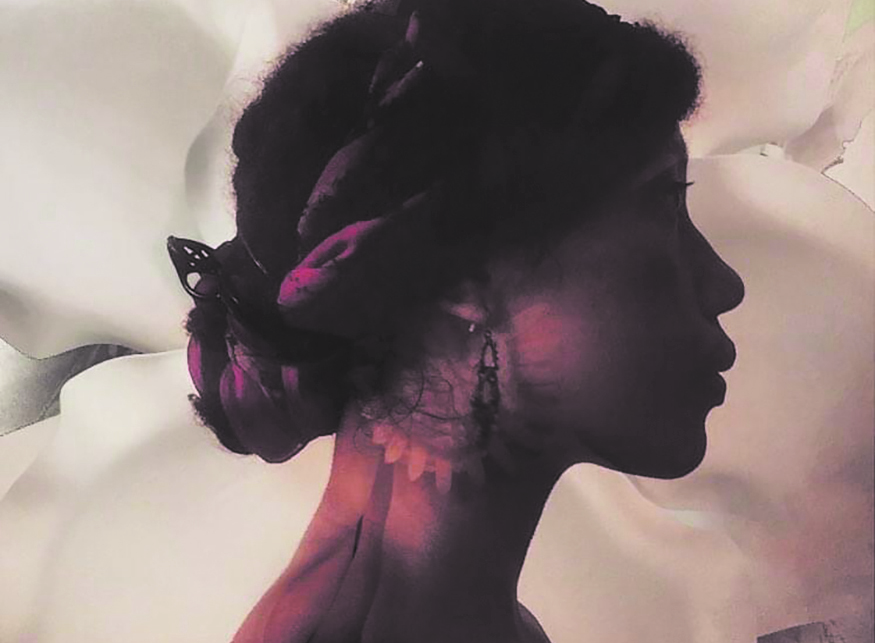
By Kalvin Valdillez, Tulalip News; Photos courtesy of Rachelle Armstead
“I’m not exactly sure why it’s my passion,” pondered Tulalip tribal member Rachelle Armstead. “I just know that I have been in love with music since I was very young. I used to love going to powwows, listening to the music and hearing the drums. I just kind of feel like music is in my blood, I really don’t know how else to explain it.”
As is the case in many cultures around the globe, music has played a key role within the Indigenous communities of America. Dating back to pre-colonial times, our ancestors held music in high regard. Songs were viewed as a form of medicine utilized in traditional ceremonies to spread stories, as well as life lessons, healing prayers, love and joy during celebratory times, and of course, the knowledge and lifeways of our people.
“I grew up near Tulalip,” she recalled. “We lived in Marysville for a while, I think we lived on the rez for a small amount of time, and then we moved up to Camano. In school, I participated in the choirs. Music is my passion and it’s something that I kind of always knew I loved and something that I gradually gravitated to.”
The steady drumbeats that reverberate from our elk and deer hide hand drums have helped the Coast Salish tribes keep time across the generations. The words sang in the tongue of our ancestors kept tradition alive and upheld the beliefs and values of each Washington State treaty tribe during the United States Government’s attempt at assimilation. And through our music, our people were able to heal wounds that were passed down through the recent decades following the destructive and hateful era of the Indian boarding schools. Whether at canoe journey, a community gathering, family potlatch or tribal ceremony, we sing loud, with prideful booming voices that resonate back to the ears of our elder’s elders as well as to our future generations. To us, music is resilience. Music is our medicine.
“I feel like music is a way to connect with people,” Rachelle expressed. “It’s about human interaction and community. Even if you’re the only one playing, like a solo performance, you’re still exchanging with the audience in a good way.”
Modern day storytellers who are passionate about music are finding an abundance of inspiration, influence and direction in traditional songs. Musicians such as A Tribe Called Red are sampling and remixing songs that were originally composed by our ancestors and turning them into a contemporary bop, which rez kids throughout the nation bob their heads to. Throughout the years, a number of Indigenous rappers have carved a name for themselves in the music scene such as Taboo of the Black Eyed Peas, Supaman, Litefoot, and several local favorites which include Tulalip’s own Deama (previously known as Nathan Kix) and Komplex Kai.
Said Rachelle, “I’d say my biggest influence is the traditional music. My music isn’t very traditional, but I feel like in its heart, it has some of those same elements, just in my own language musically. I also really like the acoustic, folk-ey, indie type music. I think because my grandpa liked it a lot; it kind of grew on me. Hip hop too. My mom listened to a lot of hip hop.”
Rachelle’s passion for music may just be in her blood as she suggested, embedded into her DNA from generations prior. Although she cannot pinpoint the exact moment she realized it, her love for the rhythm and harmony of music is everlasting and cannot be measured, it has been growing over time into a perfect crescendo. Rachelle is mapping out the music, hoping the future generations who share her passion can sight read her notes and learn from her cues while putting their own spin on things during their solo journey between the treble and bass clef, which is fitting as she is currently putting all her efforts into learning the ways of the composer.
“When I grew older, my grandpa got me a guitar,” she stated. “I picked up the guitar and the violin, and a little bit of piano. But I feel like my passion is really writing the music and not so much practicing the instruments. Violin is probably my favorite instrument, it has a really wonderful, versatile tone – there’s so much you could do with it. The violin became my main instrument up through my sophomore year of college, before I really started to transfer more into composition.”
She continued, “I started at Presbyterian College actually, majoring in violin. But I got kind of tired of violin and moved on to composition and transferred to a different school, the University of South Carolina because I wanted to work with some of the teachers at the University. And then life got kind of hectic, so I had to drop out for a while. Later on, I found Full Sail University. I wanted to finish my degree and there weren’t a lot of online composition options, but Full Sail had the audio production degree and it seemed like a great idea. And it was, it was very useful. I learned a lot about making music on the computer. And as a part of program, they give you a full home studio setup so I’ve been able to make music from the comfort of my office. Now I’m back at University of South Carolina working on my master’s in composition.”
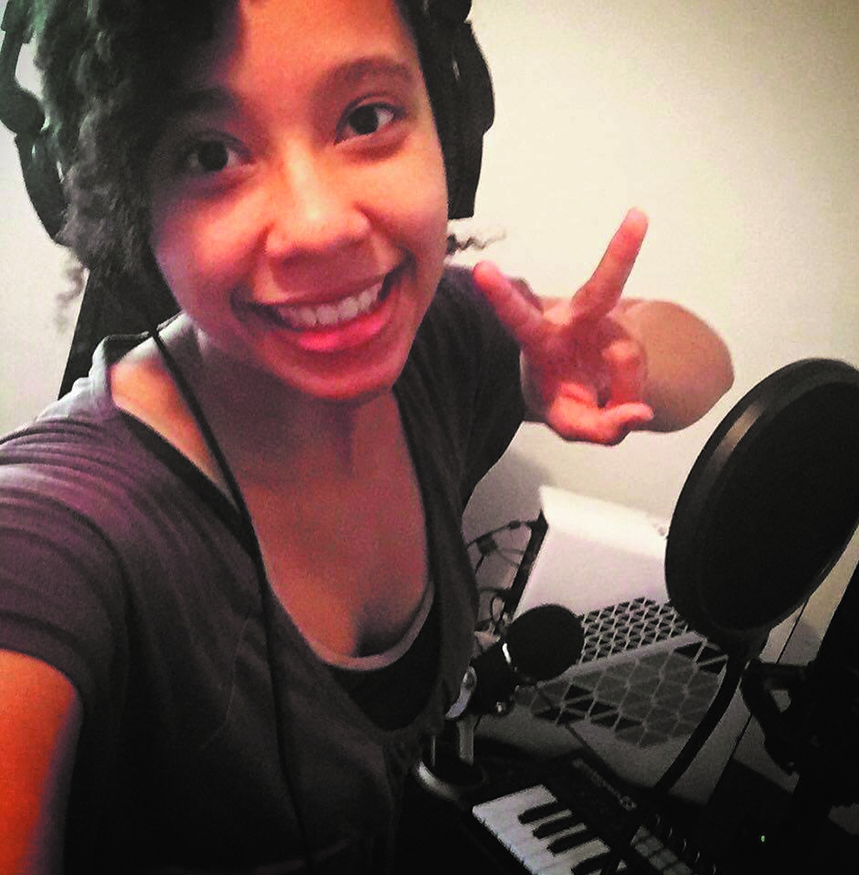
With her schooling nearly complete, Rachelle is intentionally taking on projects where she can lend her expertise to help strengthen the relationship between the culture and modern-day music. And with more and more Indigenous youth showing an interest in the artform, she hopes sharing her story will inspire young creative Natives to follow their dreams as well as receive a well-rounded education on the fundamentals of music, to equip themselves will all the necessary tools and skills of music creation, so they have solid foundation that sets them up for success in whatever they wish to accomplish through their music.
One of Rachelle’s first projects is a song partnership with the Tulalip Lushootseed Language Department. She explains, “When I was young, I loved language camp. Every summer we would sing and make our little paddle [clappers], that was always fun. I really love our language. I think it’s so joyful and beautiful. I want to promote it in any way that I can. The more people speak it, the more they enjoy it. Because COVID has been so discouraging for a lot of people, and since we can’t all get together and sing together, I thought people would enjoy this. Even though we aren’t physically singing together, this was a way to hear all of our voices together, in our own language.”
The idea behind the project was to create an opportunity for community members to collaborate on an original choir song, sang entirely in lushootseed. Rachelle reached out to Tulalip Lushootseed Warrior, Sarah Miller, who wrote the lyrics for the song and Rachelle arranged and composed all of the music. Rachelle then created a website, where the lyrics and music were posted, and asked Tulalip tribal members to record themselves singing one section of the song. When complete, the song would’ve featured a variety of Tribal voices on the track. However, due to pandemic, many people couldn’t fit time to record into their busy schedules by Rachelle’s deadline of March 1. Wanting to see the idea through, Rachelle intends to sing the original choral piece in its entirety and also hopes that it finds its way to the Tulalip Lushootseed website, featured alongside many traditional songs that are posted for educational purposes.
Rachelle expressed that tying-in the cultural aspect into her music is important to her craft. She believes that music is a good way for Native America to spread awareness and bring attention to matters that are affecting us a community, including the Missing and Murdered Indigenous Women campaign.
“Music is a great medium for sharing stories, sharing our lives and bringing awareness to important issues or problems that are happening in our lives. When I first saw the MMIW movement on social media, I felt really inspired by it. It reminded me of an older story that I read once called Dancing Outside. There’s a movie that is pretty interesting and the book is a short story – it’s really heart wrenching. So, I wrote a song about it. I feel like it was a way for me to express grief about the situation, and hopefully other people could feel that too, and understand. I think other people who also feel these emotions can express it through music in a safe way, lots of issues can be expressed and addressed through music. And we can also comfort each other through music and kind of let the world know what’s going on in our community.”
Rachelle encourages anybody with a love for music to continue to pursue their passion and hopes to collaborate with the Tribe in the near future to begin a music program for tribal youth. To stay updated on Rachelle’s musical career path, be sure to visit her professional website, https://www.rachellearmsteadmusic.com, and don’t forget to check out her tunes on her Soundcloud artist page at https://soundcloud.com/rachelle-armstead.
“If you like something, go for it,” she said. “Really practice and find your personal style. Music, for Native communities specifically, I think it’s just that element of human interaction – our music brings people closer together, it’s something that makes us feel proud. When we sing it’s like, this is our music, this is what we do. This is how we express our joy and our love and our sorrow.”
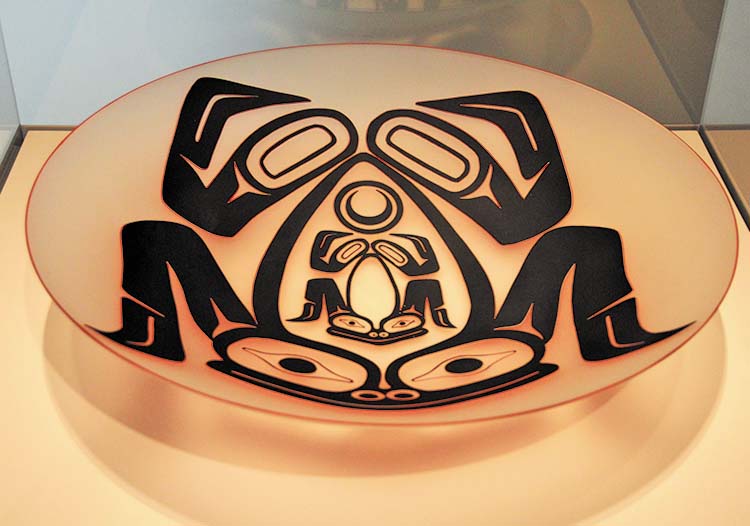
By Micheal Rios, Tulalip News
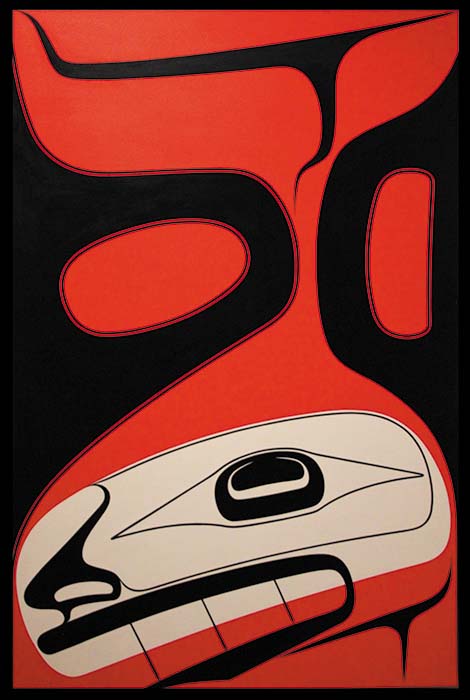
Traditional teachings spanning countless generations and highly detailed craftsmanship are imbedded within the foundation of Native American artwork. These fundamental aspects continue today much as they did thousands of years ago, even as today’s Native artists continue to evolve in response to social changes, new markets, and a desire for unique, personal expression.
The resurgence of canoe carving teaches youth how to strengthen body and spirt by working together, while increasing importance on tribal food sovereignty assists healers combat modern diseases in a traditional way. Like so many aspects of their vibrant culture, Native artists have an important dual role of simultaneously creating works for their family and community celebrations, but also for public consumption via private sales, art galleries and educational displays.
Think of how far Indigenous representation in the greater Seattle area has come in just the last several decades. Thirty years ago, you couldn’t find a map using the term ‘Salish Sea’ for the Puget Sound region. Present day, the term ‘Salish’ is a part of local vernacular and commonly understood as describing tribal culture spanning the Northwest Coast.
Through the efforts of many, a vision of authentically produced flowing formline to represent its homelands has come to fruition. The characteristic sweeping lines and subtle patterns of Salish art is now recognizable and emblematic of the Northwest Coast, as it was always meant to be.
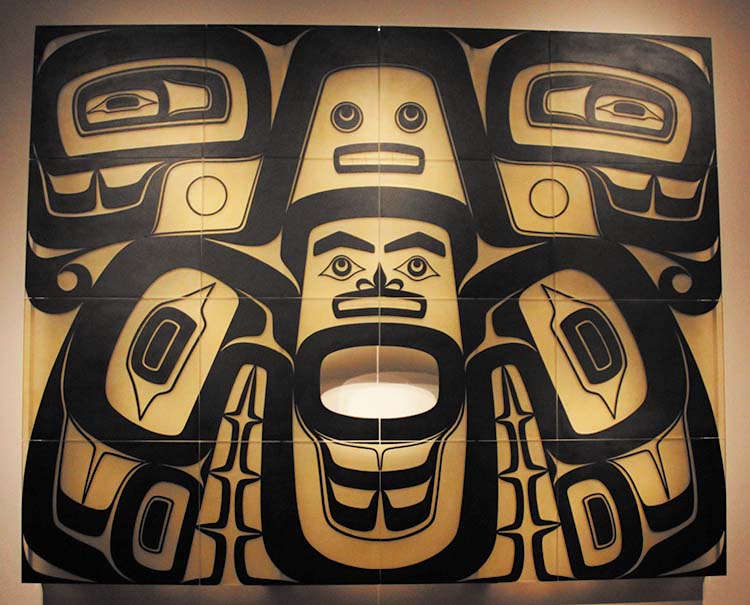
We bring you now a collection of Indigenous artistry that evokes traditional ties to the land and sea, while showcasing innovation and a look to the future. Today’s artists aren’t afraid to push boundaries nor experiment with non-traditional materials. Instead, they welcome the challenge to display the beauty of Salish culture across all mediums.
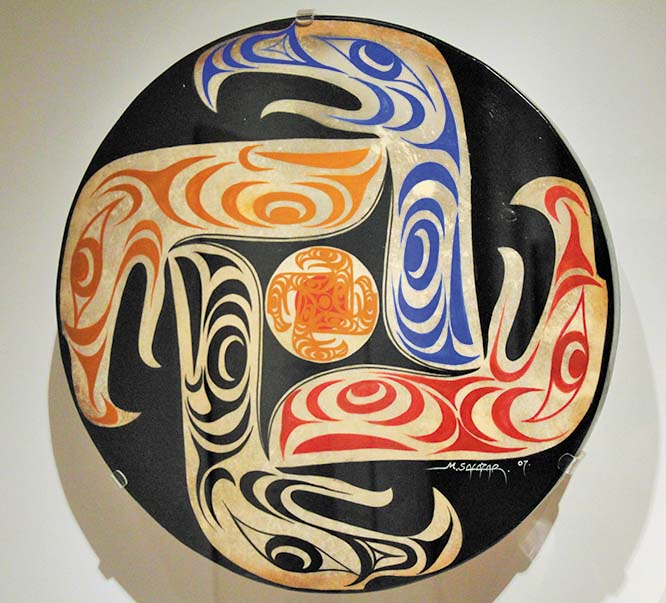
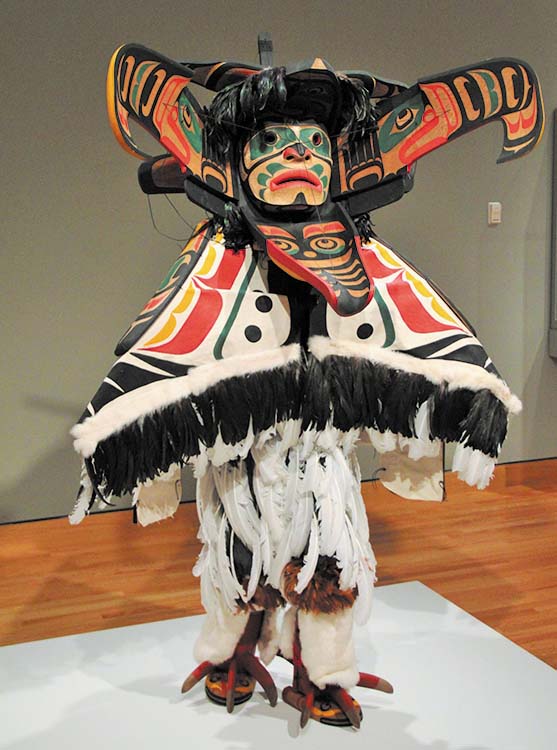
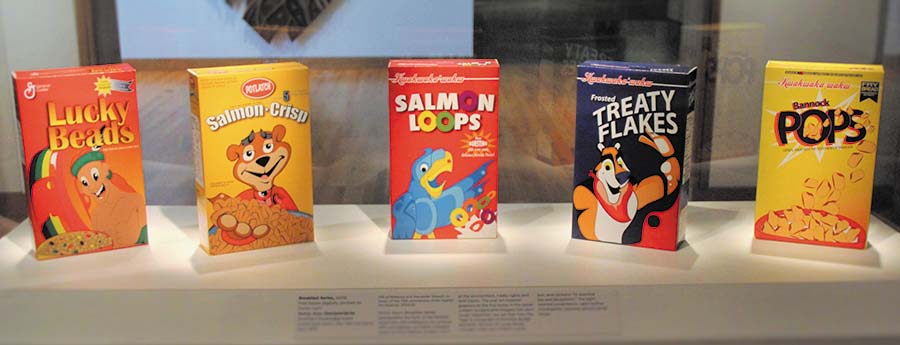
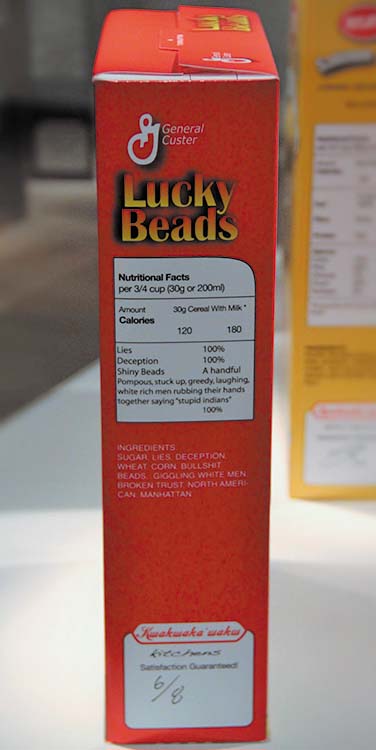
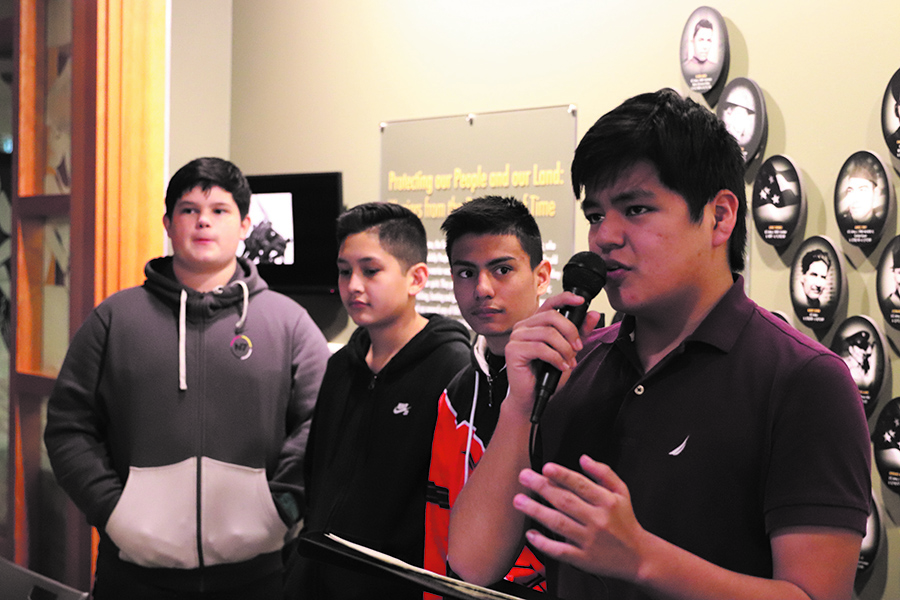
By Kalvin Valdillez, Tulalip News
Come one, come all to a special virtual gathering on the evening of March 6. The Tulalip Tribes Problem Gambling Program is known throughout the community for hosting events that are jam-packed with fun and good times, including the popular Problem Gambling Awareness Community Gathering. Current COVID-19 precautions limit in-person gatherings, but don’t fret because the program is taking their event to Zoom this year, offering you a chance to enjoy a Saturday night live stream with friends, as well as with the recovery community, from the comfort of your home. The event will feature a comedy show, traditional song and drum and special words from the Tulalip Youth Council.
“We canceled this event last year, we had it scheduled, everything was planned and contracts were out,” explained Problem Gambling Program Coordinator, Sarah Sense-Wilson. “But at that time, the state was coming down with restrictions and mandated-quarantines, the ban on travel – and our presenter would’ve been coming from New Mexico.”
The tribe has adapted in many ways since the first wave of the virus struck and now apps like Zoom are a necessity that people utilize in their everyday lives. And thanks to Zoom, Problem Gambling has coordinated a get-together where people can relate, find assistance, hear from various perspectives and learn more in general about gambling addiction with one another.
Sarah said, “This year we basically duplicated everything we had planned for last year, we have the same keynote speaker, the same master of ceremony, Terrance [Sabbas] and the big drum. And our Tulalip Youth Council will be offering an opening song and will also share from a youth perspective how problem gambling impacts their lives, sharing words of encouragement and expressions of their own experiences. I look forward to having our youth representatives involved and participating.”
Normally, the Problem Gambling Community Gathering is hosted at Hibulb Cultural Center where family and friends get a chance to intermingle and share a meal. During the open-mic portion of the event, people shed tears together during special, vulnerable moments. Hugs are exchanged when people display bravery and share their personal stories about their struggle with addiction to gambling and how they cope on an everyday basis while on the road to recovery. Sarah knows that that in-person interaction is an important aspect of the healing journey and hopes to host those types of gatherings again in the near future.
“I know a lot of people will miss the gathering,” she said. “We’re doing our best to make the COVID accommodations and keep the spirit and people’s morale up during COVID times. It seems to me that we’re entering another phase of doldrum COVID depression, so this event will be an uplifting, good experience. Something people will enjoy and gain knowledge about where to go for help, if they have follow-up questions or concerns, and know that we’re here and we’re a free service. We’re still doing treatment, consultations and services.”
She continued, “A big part of recovery is about fellowship and building on that recovery support system, having a network of people who you can draw on for strength, hope, inspiration and support. Meeting virtually for a lot of people is helpful, but it doesn’t really replace the same feel for when you’re in-person. There’s been a lot more relapse and people gambling. Whether that’s online gambling or gaming or other forms of gambling, there has been an increase since COVID and its been harder for people to really grab ahold of recovery.”
For the past several years, the Problem Gambling program has actively taken part in a countrywide initiative known as Problem Gambling Awareness Month by hosting local events and providing support and resources to those in need. The campaign originally began over fifteen years ago in response to the amount of sports betting surrounding the NCAA March Madness college basketball tournament. Since Tulalip’s involvement in the awareness month, recovering gambling addicts who live at Tulalip, or in nearby vicinities, have found a sense of community in others who they can relate to and confide in during their recovery journey.
“The reason why the National Council on Problem Gambling established March as Problem Gambling Awareness month is because historically March Madness sports betting has been the most significant gambling activity of most United States citizens,” said Sarah. “Sports betting is acceptable and prevalent and pervasive for the month of March. So, they chose March as an opportunity to raise awareness – looking at the warning signs, looking at what problem gambling is, what are the consequences, who’s at risk. Our motivation is to continue to provide education, continue to be a visible source for those who really want to address it and take a deeper look at maybe their loved ones, maybe their relatives and maybe themselves.”
As a people, Native Americans are at the highest risk of developing a gambling habit. According to a 2019 study conducted by the National Institute on Alcohol and Related Conditions, 2.3% of the entire Indigenous population are battling gambling addiction, one of the highest percentages in the nation. And as Sarah mentioned, the percentage is expected to grow even higher during the era of COVID-19.
“There’s still a lot of stigma around this particular addiction. Gambling disorder is a disease, it is an addiction,” she expressed. “There’s still huge denial. Throughout Indian Country and mainstream as well, we’re still way far behind in accepting, acknowledging and supporting people to get help. It’s a hidden illness. This disease feeds off of money, it fuels it. We don’t brag about our debt. It’s sort of a shame thing and it’s looked at like you don’t know how to budget or manage life. It becomes a real shameful secret that people attempt to hide. Meanwhile, they’re trying to recover their money by gambling. The more you gamble, the more you lose. It becomes a very vicious, destructive cycle of trying win back what was lost.”
With recent feedback from three separate recovery-focused Zoom events hosted by Problem Gambling, Sarah is confident the upcoming gathering will provide you and yours with an entertaining, informative and healing experience.
“Our entertainment is Adrianne Chalepha,” she excitedly stated. “Adrianne is an actress/comedian who was raised in Kiowa/Comanche/Apache territory in Oklahoma. Before COVID she did tours with other female comedians. She opened for former first lady Michelle Obama. Adrianne caught our eye when we were thinking about sticking with the theme of featuring a comedian. As Native people, we love to laugh, we love to enjoy good humor and laugh at ourselves.
“We also have a person in the gambling recovery community who will be sharing her story, her name is Tessa and she is a Tulalip tribal member. She will be sharing her recovery story that will inspire and motivate and hopefully destigmatize recovery from gambling. Swil Kanim is the master of ceremony. He is a Lummi tribal member and a professional violinist. Our main objective is for people to have a good time, escape, laugh, have fun, all while learning a little bit about problem gambling.”
The two-hour virtual event is happening 6:00 p.m.– 8:00 p.m. on March 6th. If you wish to join in on the fun, the Zoom ID for the community gathering is 313 507 8314. For additional information, please contact the Tulalip Problem Gambling Program at (360) 716-4304 or visit and like the new Tulalip Tribes Problem Gambling Program Facebook page.
Said Sarah, “We’re here. People can always call us if they have any questions or if they want to learn something specific. We welcome them to the Problem Gambling Awareness Community Gathering, it’s family friendly. We are very hopeful that our people will enjoy the event, have a good time together.”
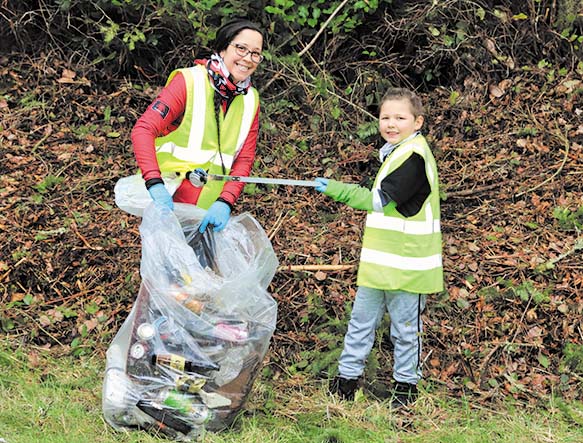
By Micheal Rios, Tulalip News
“The motivation is to bring our Tribe and community together for unity, while creating necessary awareness for a safe and clean environment,” shared Josh Fryberg as he walked along the embankment of a popular Tulalip road searching for litter. “Keeping our land beautiful benefits our youth, elders and greater community. It is up to each of us, as individuals, to have a safe environment, not only for us here today but for future generations as well. We are the land protectors.”
These words resonated with an estimated forty Tulalip residents who volunteered several hours out of their Sunday afternoon to help beautify a 2-mile stretch of Turk Drive. One of the most commuted roads on the Tulalip Reservation because of its accessibility to the Mission Highlands neighborhood, it’s also become a common spot to dump trash or casually toss out litter from passing vehicles.
Brothers Josh Fryberg and Rocky Harrison reside with their families near the end of Turk Drive and see the littered area on a daily basis. They decided to do something about it by coordinating a community cleanup. Calling on local residents who want to see a pristine Tulalip and any other volunteers who are eco-conscious, the brothers organized their first neighborhood cleanup on February 21.
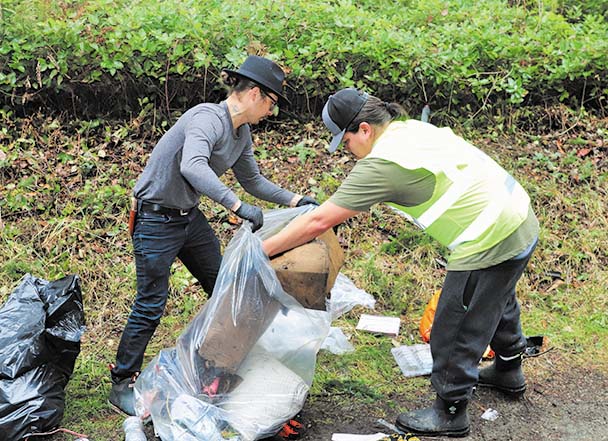
“It’s time to organize and get the job done,” said Rocky. “I want to see a clean Tulalip. I want to see a brighter future for my children. I come from dirty neighborhoods and even contributed to them in my younger years, but I’m mature enough now to realize the error of my ways and am committed to make positive change for our people.
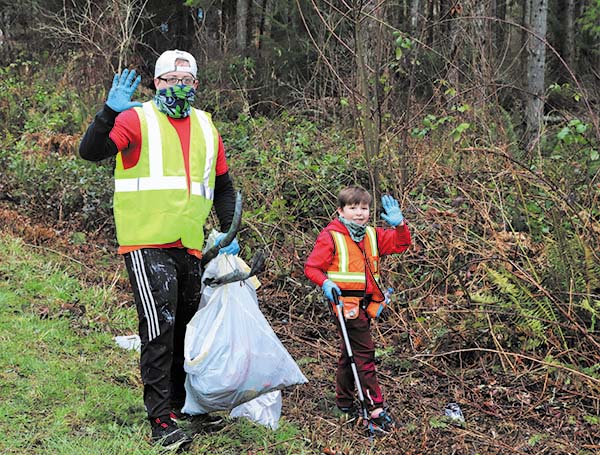
“It’s time to organize and get the job done,” said Rocky. “I want to see a clean Tulalip. I want to see a brighter future for my children. I come from dirty neighborhoods and even contributed to them in my younger years, but I’m mature enough now to realize the error of my ways and am committed to make positive change for our people.
“This is a good turnout for today’s cleanup, almost forty people taking time out of their weekend, but I hope even more people come together for future cleanups,” he continued. “Together we can raise awareness about the amount of littering that happens on our Rez. Maybe people seeing our efforts as they drive by or on social media will help deter others from littering in the future. We can’t forget the true value of our Tribe isn’t money or businesses, our real wealth is our homeland and the strength of our people.”
A community cleanup brings reservation neighbors together to clean and improve public spaces that have been neglected and misused. Members of the Tulalip Youth Council helped restore the naturally green conditions alongside Turk Drive that had become plagued with trash of all sorts. Working with members of Sacred Riders motorcycle club, youth and adults worked side by side to remove litter by the bag load.
Cleanups show that people who use an area care about its appearance. According to the Department of Justice, crime is less likely to occur when a neighborhood is clean and used frequently by residents and their friends. By reclaiming residential areas, eliminating debris from vacant areas and roadsides, or sprucing up public spaces along the street, Tulalip citizens can make the reservation less attractive to criminals and more attractive to the community, which makes everyone safer.
Promoting safety in all its forms is a priority for both Tulalip Bay Fire and Tulalip Police departments. United by a shared vision with the very community they protect, six of Tulalip’s first responders joined the volunteer cleanup crew. Several tribal members rejoiced at the fact they could count on Tulalip’s firefighters and police to participate in events that really benefit the community.
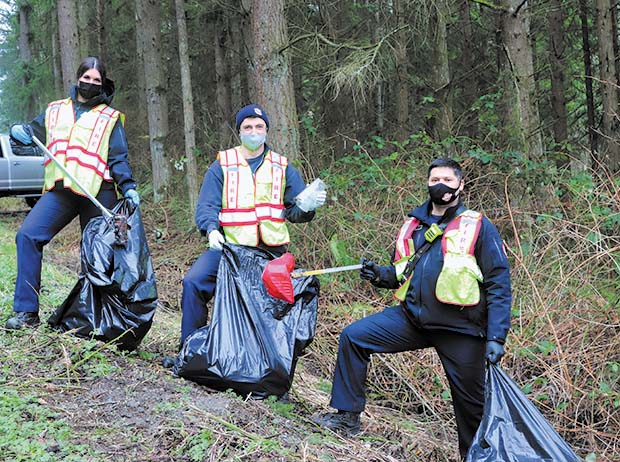
“It means a lot being able to participate in today’s cleanup,” said firefighter Ava Schweiger. “We love getting out into the community and support local events that make the area safer for everyone. I really enjoy being out with the community because everyone is so nice and thankful for what we do.”
“Tulalip has always done such a good job of making us feel appreciated, so any chance we have to give back and pay forward that mutual respect we’ll take advantage of, “ added firefighter John Carlson, 5-year veteran of Tulalip Bay. “We take a lot of pride in where we work. Tulalip is a beautiful place and is definitely worth the time to make sure it’s natural surroundings are clean and litter-free.”
Litter is more than just an eyesore on Tulalip’s landscape. Litter is costly to clean up, and it negatively impacts quality of life and economic development. Most of all, it has damaging environment impacts. Considering how the ocean waters border Tulalip, it’s an awful reality that local litter eventually ends up in our waterways and contaminates the ocean.
“A lot of teachings were carried down by our ancestors that tell us we need to protect the earth Creator gave to us. That’s our responsibility,” reflected 14-year-old Image Enick. “For us to carry on those teachings and take care of Mother Earth means picking up garbage when we see it and not disrespecting the land by littering.”
After several hours working tirelessly on a Sunday afternoon to clean up their community, the forty volunteers had collected just over 2,000 pounds of trash. That’s nearly one metric ton!
“Today we are grateful for unity and being able to work together,” said Josh at the cleanup’s conclusion. “We are looking forward to many more cleanups in the months to come.
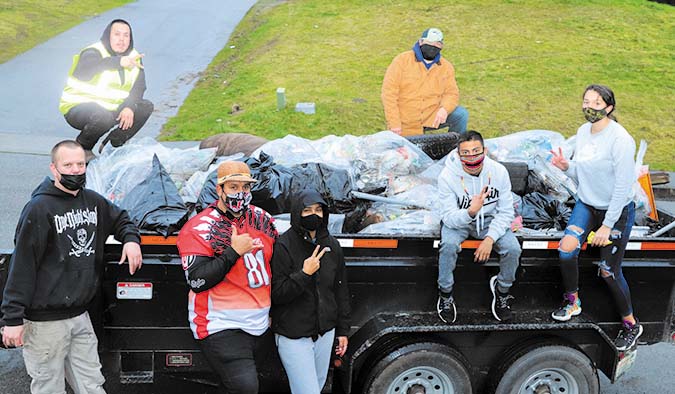
Our goal is to have a different cleanup site every two-weeks and work on passing a no littering ordinance, along with having signs put up. It will take all of us to create a bright future for our current and future generations. Together we can make this happen.”
The next community cleanup is planned for Sunday, March 7 at 11:30am. Meeting location will be outside Tulalip Data Services, across the street from Tulalip Bingo. Cleanup site will be 27th Avenue, locally referred to as ‘the Quil’. All environmentally conscious individuals are invited to participate. High visibility vests, garbage bags, latex gloves, hand sanitizer, and garbage picks will be provided.
For more information please contact co-coordinators Josh Fryberg at 206-665-5780 or Rocky Harrison at 360-454-6946.
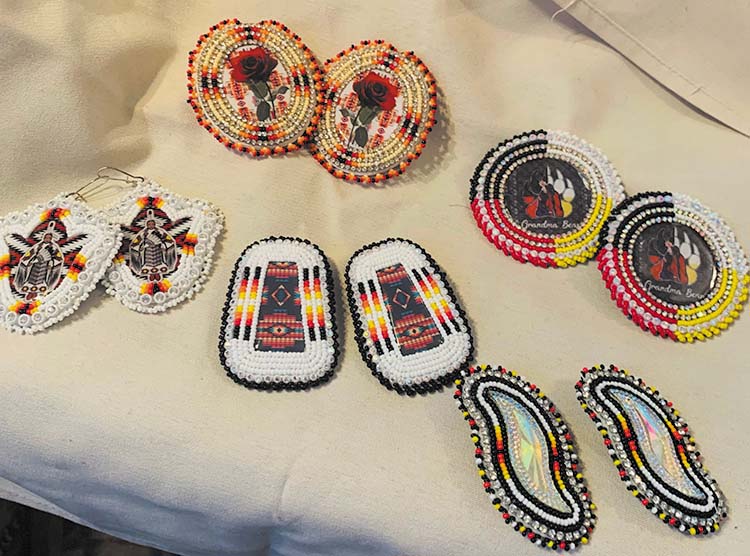
By Kalvin Valdillez, Tulalip News
“I bead pretty much every day,” said Tulalip tribal member, Donna Chambers. “I really want good energy to go out to the people through the gifts I make. I don’t make anything sad, mad or upset. I do everything with good spirit in my heart and I just go by what my heart says to do.”
Sometimes life gives you a sneak peek into your future when you find something you absolutely love, care for and are deeply passionate about. For some it’s sewing, drawing, carving, singing, dancing, photography – you name it. You know instantly when your passion finds you. And it matters little if you practice every day from that point on or if you acknowledge that connection and agree to revisit it later on in life. When your soul and your life’s passion align, that bond cannot be broken, not even by the hands of time, especially when your culture has significant ties to your calling.
This was something Donna knew when she fell in love with her passion at the age of 18. When she picked up a thread and needle to bead her first pair of earrings, she couldn’t tear herself away from her newfound traditional hobby for months on end. She also knew it when she no longer had enough time in her day to continue her practice while raising a young family and working a full-time job. When she set down her beads only one year later, she knew it was temporary and that she would return to her art one day in the future. Over thirty years later, after living a fulfilled life, watching her kids grow up and caring for her parents until they transitioned to their next journey, Donna’s passion found its way back into her life and has brought her endless joy and good vibes, which she in turn cycles back into her artwork and therefore, into the Tulalip community.
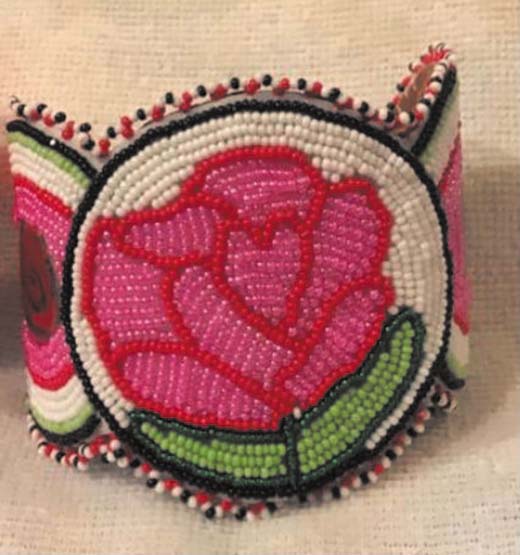
“I originally started when I was young just to get involved with our culture, to try to get in-tune with my heritage,” she said. “I didn’t live here on the reservation during my childhood. I was born and raised in Oregon, so I pretty much lived away from the area until I was about the age of 12 when I moved back here. At the beginning, I did bead a lot and made a few things for myself like my dangly earrings, just learning the basics. I was beading before my kids were born and I put it away because I was busy with the kids and the family all the time. I decided to pick it back up after I lost my mom and dad. I’ve been going for about three years now and I’m now 56.”
Donna’s kids knew little about her passion and her heart’s desire to bead. In fact, her daughter, Alicia Budd, is the person who reintroduced her back into the world of beading. According to Donna, Alicia attended a beading-circle over a long weekend, returned home and immediately told her mom ‘you should learn how to bead, this would be really good for you’.
“I like to do things with my hands, I also like to crotchet,” Donna expressed. “I’ve made lap blankets for my family and the kids who’ve come into my life, so that they have blankets when they are reading their books or watching TV. My daughter sat down with me and showed me what she learned. She refreshed my brain because I lost it for so many years. I picked it up that day and never set it back down. Now it’s something I look forward to doing every single day.”
Almost as important as the artform itself is the creator’s personal environment, how they set themselves up in order to get into the proverbial ‘zone’ while maximizing production and minimizing distractions. Some artists require certain foods, vices, lighting and people around in order to generate their best work. Donna claims that all she needs is the love of her family and friends, some good tunes (ranging from classic oldies to Hip Hop and R&B, all the way to heavy metal), and her beads. She goes into each project with good intentions and sans game plan, letting her heart freestyle the design and guide her until the work is complete. Her workstation includes her late father’s comfortable chair, her work materials meticulously arranged all around her and of course, a variety of vibrant beads.
When asked what type of items she creates today she replied, “Oh just about everything! I still occasionally make my dangly earrings, but most of the things I make now are lanyards. Somebody at the clinic saw the lanyards my daughter and I wear and asked where they could get them, so some of the nurses at our health clinic ended up buying a lot of lanyards from me. I make sure to make a lot of them because lanyards are something that people can always use. The other things I make are keychains, earrings, headbands, medallions, bracelets, barrettes, broaches, bolo ties. I made an entire wallet from scratch once. I also made Seahawk medallions for myself and my grandson, JD Rinker, and I made him a full-length tie that he can wear at Youth Council meetings and gatherings where they have to dress up.”

She continued, “I’ve also beaded center pieces for the headbands that some of our youth wear with their regalia during salmon ceremony. And I’ve made bracelets for the guys, I made three of them, one I gave to Louie [Pablo], it had Eddy’s name on it, he was Louie’s brother who passed away. I gifted him one because it felt like it was the right thing to do at the time, something to remember his brother by.”
Several times Donna expressed that she allows her heart to lead when it comes to her art. And my oh my, Donna has quite the big heart. Not only does she bead cool custom pieces for family or bracelets to honor loved ones, Donna also gifts a lot of her work to our local heroes including police officers, judges, firefighters, and the men and women who bravely serve in the US military.
“My daughter works at the courthouse so I surprised everybody at her work with a gift,” Donna said. “All the judges got something from me, as well as the clerks and the secretaries. I’ve done work for some of the funerals out here, I made their families keychains and necklaces. I also make a lot of pieces for police officers. I made these little medals, shaped like a police badge, and I beaded around them and put them on a necklace. I’ve given about twenty away so far. I just give them to any police officer that I see and feel like that’s the one. I’ve given some to our Tribal police officers and three to Marysville police officers. I usually carry some of my work in my car, so if I do see a police officer, a fireman, or somebody serving in the army or the military, I can offer it to them as a way to thank them for their service and everything they do. I’ve gifted pieces to [TPD] Officer Jeff Jira and just completed something for our Chief of Police.”
During the coronavirus pandemic, Donna was presented with the opportunity to focus more on her beadwork. In addition to beading, she also poured her efforts into a new project, creating masks. She explained that after she saw the need for more masks in the community, and the demand for something a little more aesthetically pleasing than the standard surgical mask, she started sewing immediately, creating clothed masks with Native, floral and paisley designs. Whenever she leaves home and is headed to the local grocer, she is sure to grab a handful of masks, which are often distributed to the store’s employees and shoppers before she even checks-off the first item of her shopping list.
Donna strongly believes that beading is an essential tradition to the Native American culture, noting that it is an artform that is easily identifiable and synonymous with the Indigenous way of life and teachings. The relationship between Indigenous people and beadwork dates back generations prior to colonial times to when our ancestors crafted beads from bone and stone. Beads were worn as a status symbol of wealth and beaded items were featured on traditional regalia, jewelry and artwork. Due to the introduction of glass, metal, crystal and various beads through trade, the colorway and pattern possibilities for Native beadwork holds no bounds.

Donna is doing her part to keep the tradition going, teaching the future generations of Tulalip all of her tricks of the trade, ensuring the art of beading extends well past her children’s children. Since returning to the bead game, she has shared her knowledge with many Tribal and community members, including Facebook friends, and many of the kids from her neighborhood. Donna also has some future classes with the Tribe in the works and plans to conduct Facebook Live tutorials in order to help aspiring beaders with the fundamentals.
“I just hope the more I bead, the more kids around me will want to pick it up,” she said. “Sometimes it does show. Louie’s three little kids were over here last summer, watching me bead. They kept saying they wanted to learn how to bead. They were persistent, so I made them each a beading packet with all the tools and showed them how to do it. They sat here for over two hours with me and they picked it up really fast. They each made something that day. When they were done, I told them they couldn’t keep it and they looked at me kind of sad because it was their first piece. I explained that since it was the first thing they ever made, they had to give it away in order to get good vibes back. They decided to gift them to their mom and grandpa so their very first pieces could stay in the family.”
Donna hopes that by sharing her story and her passion for beadwork, she can garner enough attention to reach the representatives of one Ellen DeGeneres, stating “I have an Ellen DeGeneres piece. My dad was really into Ellen, he faithfully watched her show. When he passed, I felt like I needed to bead her name on a medallion. I have not yet been able to gift it to her because I don’t know how to go about giving it to her or getting it there.”

With a new and fully-restored love for beadwork, there is no project that Donna is afraid to tackle. In fact, she is happily welcoming any challenge that comes her way because, as she said, all she needs is her beads and her beats. All of Donna’s work comes with a guarantee, as she tells all of her customers that if anything happens to a piece you purchase from her, she will fix it for free. If you are interested in purchasing any of Donna’s work, please contact her via Facebook for more information.
“There’re things that I make to sell, but there are a lot of things I make simply because my heart tells me to do it,” Donna said. “I gift them to all types of different people because it feels like something I need to do. But I do enjoy selling items when I can because it does put extra money into my funds so I can continue to bead more. It gives me good energy, that’s why I like to put good energy back into it. It makes you feel good that you’ve accomplished something for the day. All I can say is if you’re interested in beading, try it out, pick it up. I bet you’ll like it because I definitely do.”